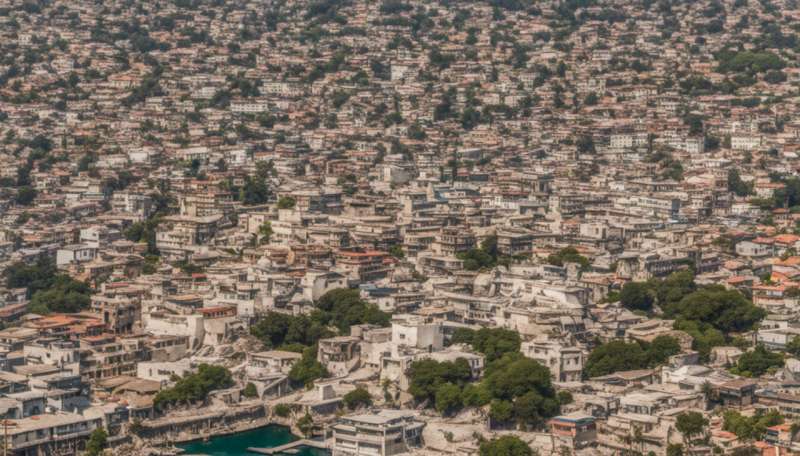Two separate ruptures identified within the 2021 Haiti earthquake

On 14 August 2021, a devastating earthquake struck Southern Haiti, an area known for complex earthquake activity that is poorly understood. But now, researchers have shed new light on the intricacies of the 2021 earthquake that will be crucial for future hazard mitigation.
In a study published this month in Geophysical Research Letters, researchers led by the University of Tsukuba have revealed that the earthquake's rupture history, or extent of slip, comprised two separate and surprising parts. This finding indicates that the region is host to a diverse network of faults.
Haiti is located at a transpressive tectonic boundary, where two tectonic plates slide past each other while also being pushed together. The Enriquillo—Plantain Garden fault zone forms part of this boundary, running through the area that includes Haiti and the Dominican Republic. The newly identified rupture episodes of the 2021 earthquake include reverse faulting near the epicenter (where one side of the fault was pushed upward) and strike-slip faulting further west (where the fault blocks slipped past one another). These rupture episodes are surprising because they are inconsistent with the overall geometry of the main fault.
"Southern Haiti is located at the boundary between the Caribbean and North American tectonic plates," says lead author of the study Professor Ryo Okuwaki. "The relative motion of the plates not only creates stress along their boundary, but also causes uplift of the surrounding region. This means that earthquake ruptures in the area are particularly complex."
Such complexities create challenges for risk mitigation. To investigate the rupture history of the 2021 Haiti earthquake, the researchers applied integrated seismological analyses to global seismic records. These types of analyses often involve making certain assumptions that can be inaccurate and may not fully represent what's happening underground. In remote areas where other geophysical and geological observations are limited, this inaccuracy can be significant and unexpected faults can be missed.
"We performed integrated seismological analyses using a new method called finite-fault inversion as well as P-wave back-projection. Our methods required minimal assumptions," explains Professor Okuwaki. "We identified at least two separate faults with their own faulting mechanisms. Our modeling showed that the 2021 earthquake broke these previously undetected faults, rather than the main Enriquillo—Plantain Garden fault."
This finding demonstrates that the fault zone is far more complex than previously thought, with a network of faults in the subsurface that have diverse faulting styles. These faults can interact during earthquake ruptures, with earthquakes "jumping" between disconnected faults.
Such multi-fault earthquakes are unpredictable and can cause stronger ground motion. Therefore, identifying complex fault networks is crucial for modeling possible rupture scenarios and future hazard mitigation. Investigating these fault networks using seismological analyses with minimal assumptions will provide critical insights for local risk management.
More information: Ryo Okuwaki et al, Oblique convergence causes both thrust and strike‐slip ruptures during the 2021 M 7.2 Haiti earthquake, Geophysical Research Letters (2022). DOI: 10.1029/2021GL096373
Journal information: Geophysical Research Letters
Provided by University of Tsukuba



















